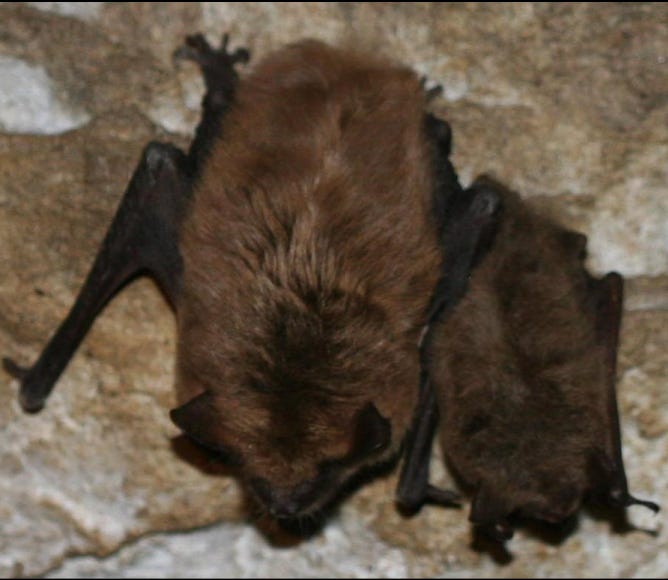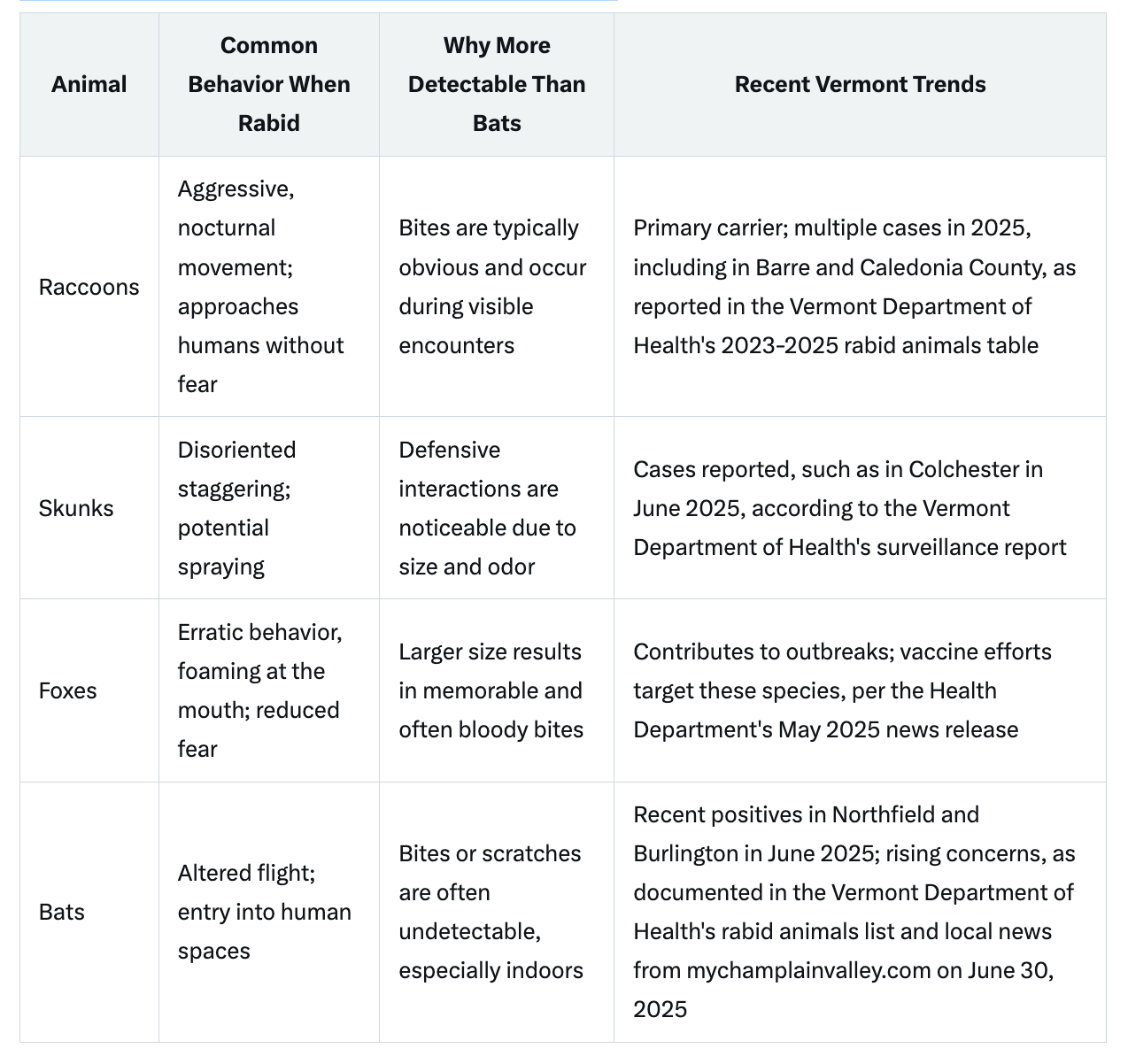Among Rabies-Carrying Animals, Bats are The Most Dangerous - One Was Discovered in Northfield
Reports of suspicious wildlife should be directed to local animal control or the Rabies Hotline at 1-800-4-RABIES, as recommended by the Vermont Department of Health.
A bat in Northfield tested positive for rabies on June 25, 2025, prompting a public health notice from the Vermont Department of Health, as detailed on their official website. Rabies cases in wildlife occur regularly in Vermont, where the virus is present in species such as raccoons, skunks, foxes, bats, and woodchucks, but bats are the most dangerous for a reason.
Why Bats Represent a Distinct Rabies Risk
Rabies is a fatal viral disease that affects the brain and nervous system, transmitted through saliva via bites, scratches, or contact with open wounds or mucous membranes, according to the Vermont Department of Health. Once symptoms appear—such as fever, headache, confusion, hydrophobia, and paralysis—the disease is almost invariably fatal without prompt intervention.
Bats present a unique challenge because their bites are frequently imperceptible. Bats possess small, sharp teeth that can leave minimal or no visible marks, as explained on the Vermont Department of Health's rabies information page. Encounters may occur during sleep or in low-light conditions, leading to unrecognized exposures.
This characteristic explains why bats are associated with approximately 70% of human rabies cases in the United States, despite a low prevalence rate among tested bats in Vermont, per the department's surveillance data.In comparison to other rabid animals prevalent in Vermont:
Data from the Vermont Department of Health indicate that while terrestrial animals like raccoons contribute significantly to local outbreaks—prompting the 2025 vaccine bait drop—bats' elusive nature often delays post-exposure treatment.
Post-exposure prophylaxis, consisting of rabies immune globulin and a vaccine series, is highly effective if administered before symptoms develop, as advised by the Vermont Department of Health.Vermont's bat populations, including species like the little brown bat, play a crucial role in controlling insect pests but have been impacted by white-nose syndrome, potentially increasing human-wildlife interactions, according to the Vermont Fish & Wildlife Department.
Indicators of Rabies in Wildlife
Rabies cannot be confirmed visually; laboratory testing of brain tissue is required, per the Vermont Department of Health. However, certain behaviors warrant caution, particularly in bats:
Daytime activity, inability to fly, or unusual approachability.
Presence in indoor spaces, such as bedrooms or attics.
For other animals: Foaming at the mouth, paralysis, or atypical aggression.
Reports of suspicious wildlife should be directed to local animal control or the Rabies Hotline at 1-800-4-RABIES, as recommended by the Vermont Department of Health.Measures for ProtectionTo mitigate risks, the Vermont Department of Health recommends the following:
Seal entry points in homes larger than a quarter-inch to prevent bat access.
Ensure dogs, cats, ferrets, and wolf hybrids are vaccinated against rabies, as required by state law.
Avoid handling wild animals, including apparent orphans, to prevent unnecessary euthanasia for testing.
In case of potential exposure, wash the area thoroughly with soap and water, then seek medical evaluation for post-exposure prophylaxis.
Secure garbage and feed pets indoors to reduce attractions for terrestrial wildlife.
Additional resources are available at healthvermont.gov/rabies or through the Vermont Fish & Wildlife Department. The recent Northfield case emphasizes the importance of awareness in preventing rabies transmission.




When saying 70% of cases are due to bats its important to remember that that means about 7 people a year in the entire U.S
the chances of getting rabies from a Bat or any other animal are extremly slim and the biggest way to avoid it is to simply not handle wildlife.
I bring this up because anti-bat sentiment due to fear of rabies can be very dangerous historically and decimate their populations. Bats are an important part of our eco systems and help imensly with insect control.
Theres not much cause for concern here as long as folks are avoiding handling wildlife and taking proper precautions.